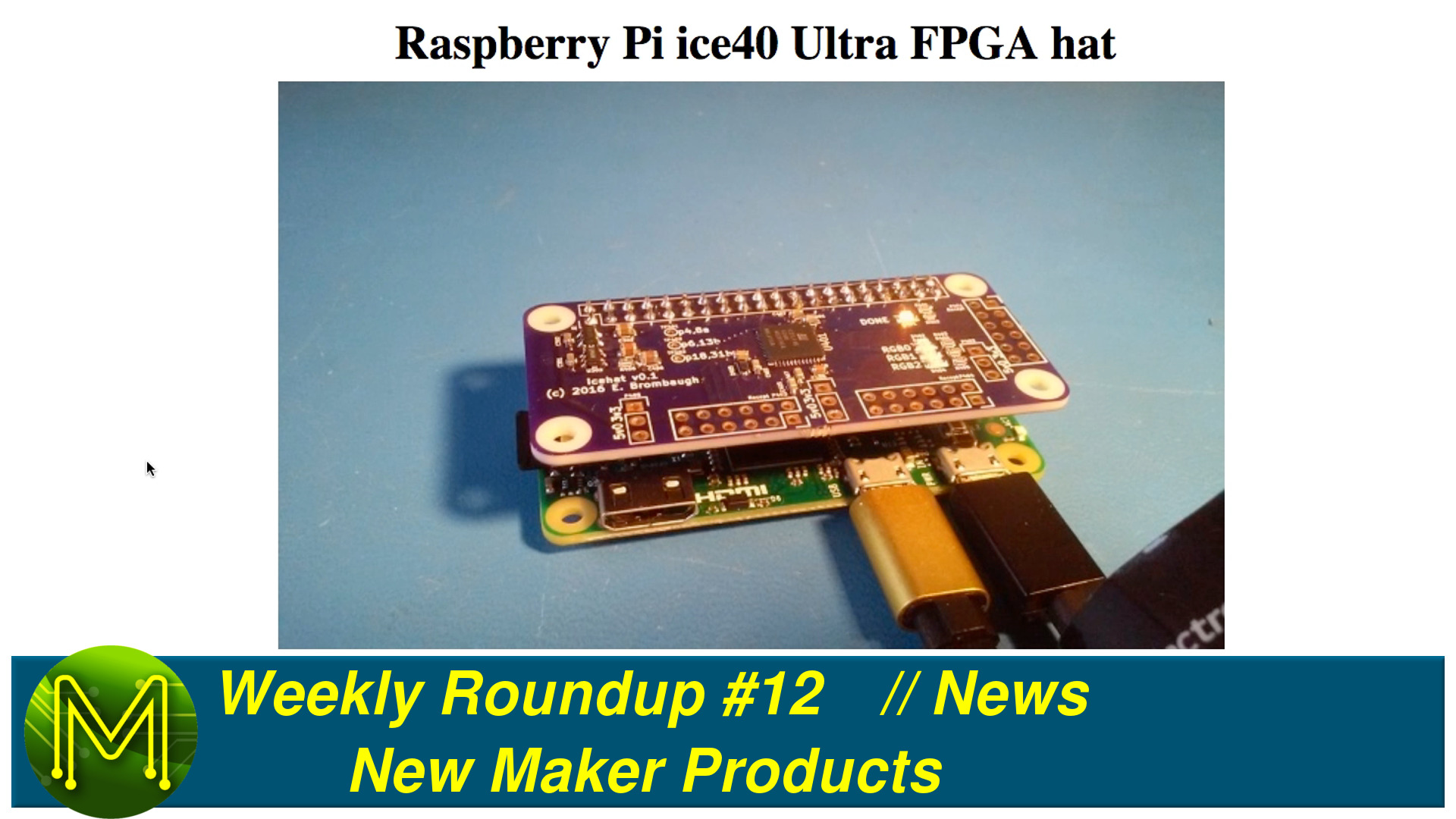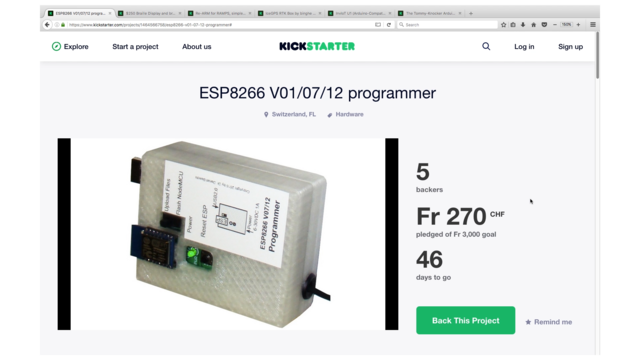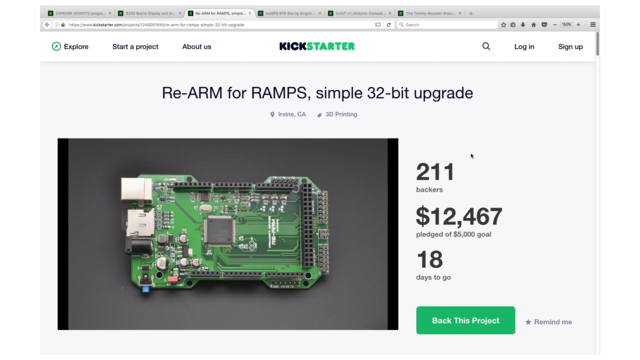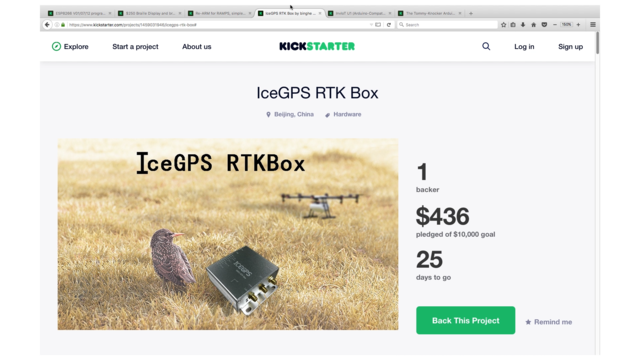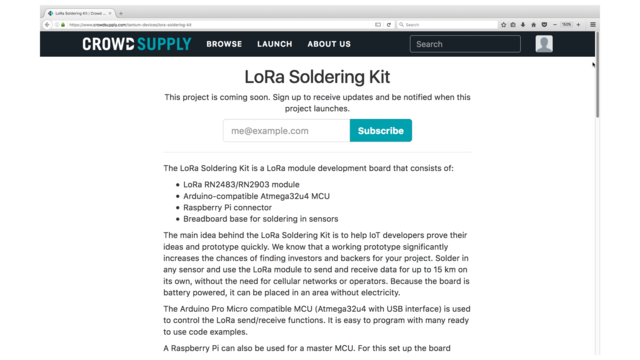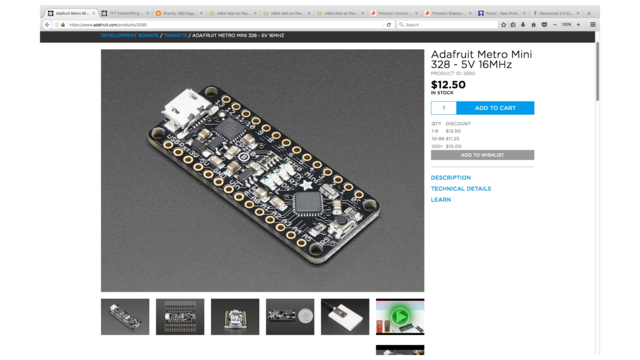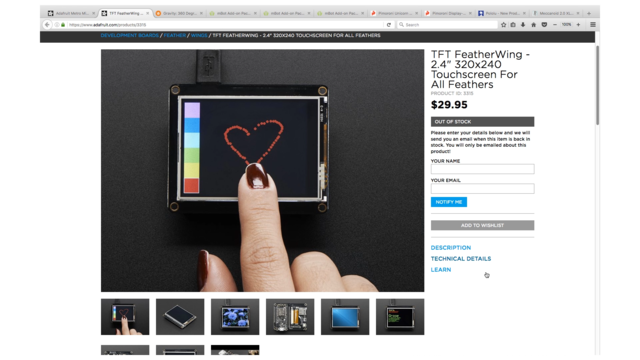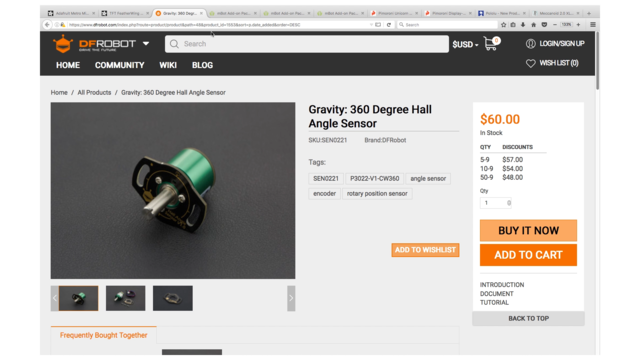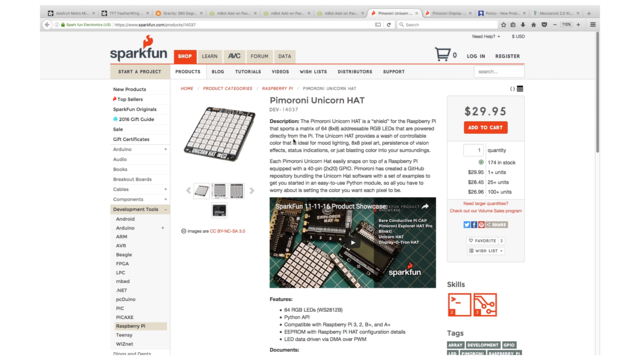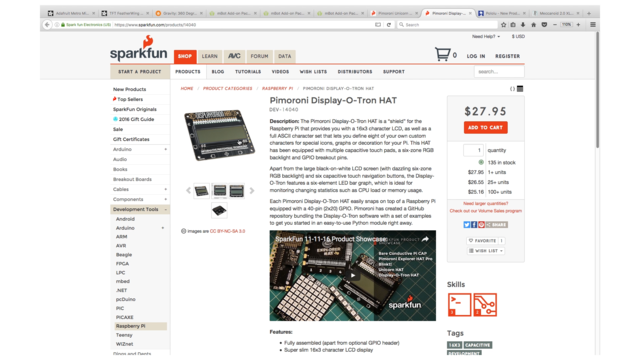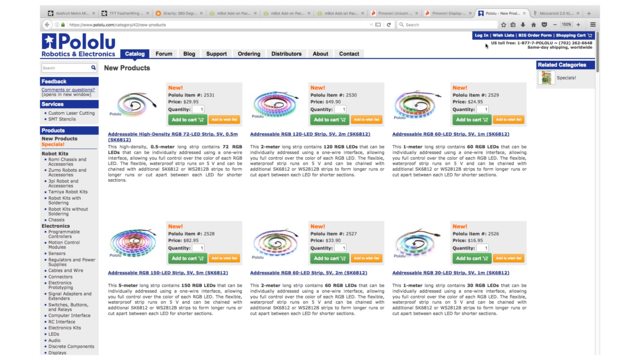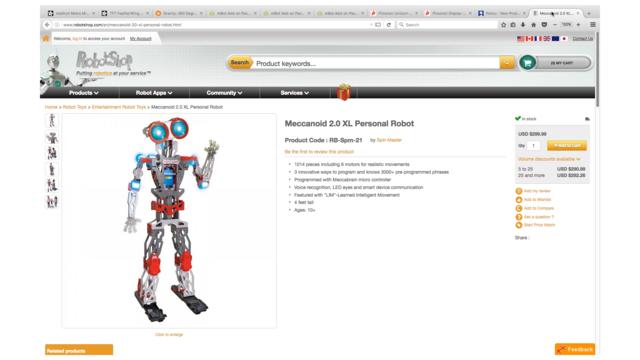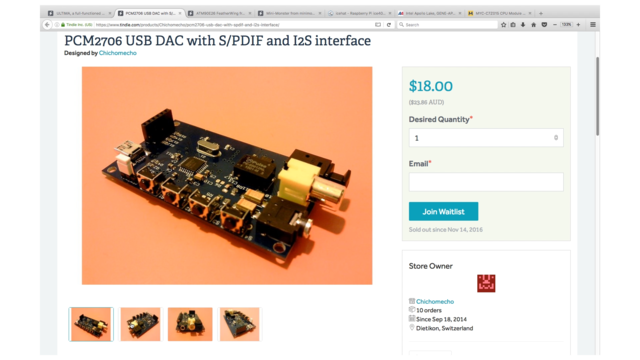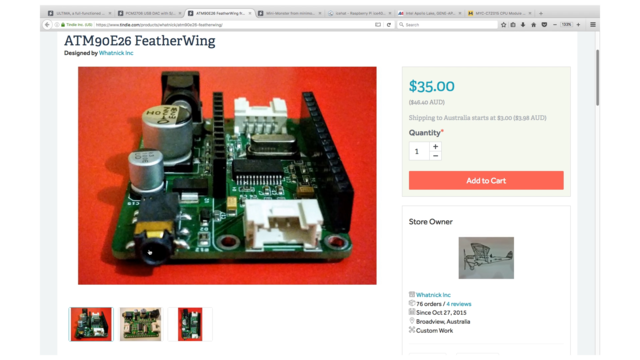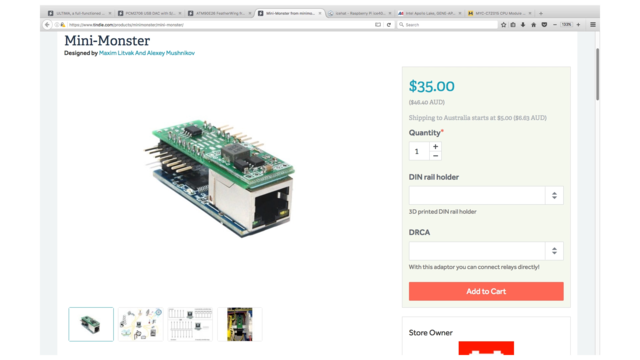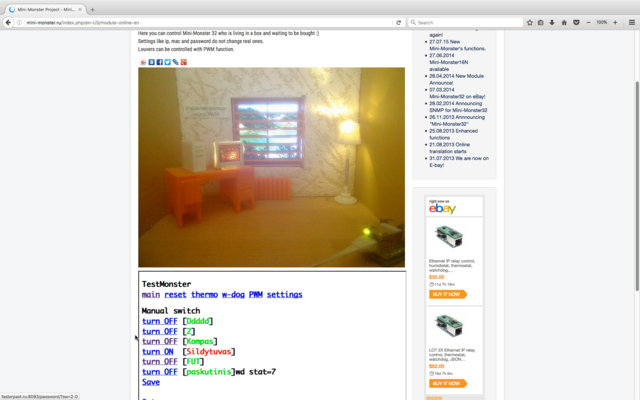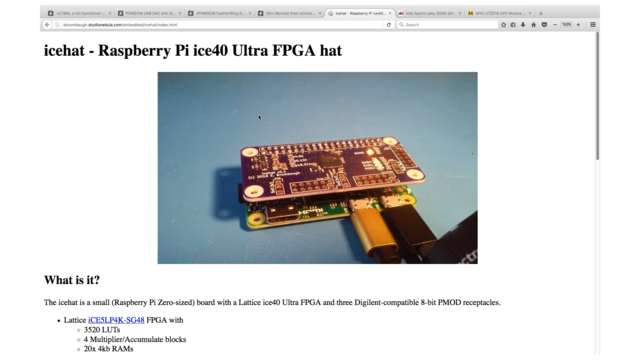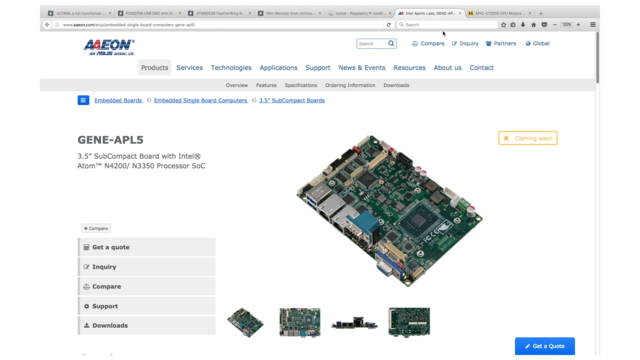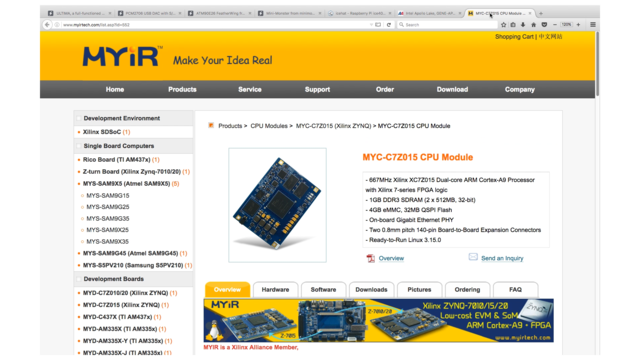Weekly Roundup #12 - New Maker Products // News
In the Weekly Roundup this week we have RAMPS boards, FPGA boards, obscure sensors, a Kickstarter 2nd attempt and a Unicorn.
Crowd Funding
KickStarter
There’s a bunch of cool things on KickStarter this week.
ESP8266 V01/07/12 programmer
If you’ve ever had issues programming your ESP modules due to lack of power from the USB port, then you could pick up this programmer on Kickstarter.Or else just buy a powered USB hub.
$250 Braille Display and braille keyboard for iPad or tablet
This next one I really like. It’s a low cost Braille display and keyboard for an iPad. It looks promising, but I doubt it’ll get the funding with only under 3 weeks to go. A real shame.Re-ARM for RAMPS, simple 32-bit upgrade
If you’re in to CNC or 3D printing, then you’ll find this board interesting. The board contains an LPC1768 ARM MCU running at 100MHz which means it’ll be able to keep up with faster prints.It also has on board SD, MOSFET and stepper drivers, thermister inputs and GPIOs all with 5v tolerant pins. It can connect to a range of LCDs via SPI or I2C and runs Smoothieware.
A great upgrade that does it all.
IceGPS RTK Box
Oh! This looks familiar! It’s the same RTKBox campaign that was cancelled a while ago, but it’s back up on Kickstarter with the same level of interest.Things have changed a little, but it’s really more of the same.
InvIoT U1 (Arduino-Compatible), all-in-one board.
This is a good idea. It’s an all in one user interface box that you can program to control whatever you want. It’s a box that contains an Arduino U1 compatible, WiFi, RTC, EEPROM, SD, buzzer, NRF24 header, LCD, LEDs, and buttons and rotary encoder for user input.The Tommy-Knocker Arduino Compatible Secret Knock LOCK!
Now I like this one. Security through obscurity isn’t a good idea ever, but sometimes it’s fun.It’s a small Arduino that uses a Piezo to detect movement. So you can get it to turn a relay on or off with a knock sequence that you can program.
IndieGoGo
Firstmakers
Here’s another education product on IndieGoGo. It’s a change from the usual in that it’s just an extension board that plugs in to a PC. So no MCU onboard.It contains a range of sensors, motor drivers and inputs and is programmed without, apparently, any previous programming skills.
Crowd Supply
Only one interesting thing on Crowd Supply.
LoRa Soldering Kit
The LoRa soldering kit is in pre-launch status on CrowdSupply. It’s a kit that contains an RN2483 LoRa module, ATmega32u4, Raspberry Pi compatible header and small prototyping area.AdaFruit, Seeed, SparkFun, DFRobot, DigiKey
A few interesting things from the major shops.
Adafruit Metro Mini 328 - 5V 16MHz
AdaFruit have their MetroMini back in stock. It’s a small ATmega328 based board with onboard 5v regulator, LEDs and CP2104 USB to serial converter. It can run off either USB power or a 6 to 16V supply.TFT FeatherWing - 2.4" 320x240 Touchscreen For All Feathers
Then there’s the TFT hat or cape, or whatever you want to call it that gives you a 2.4 inch 240 by 320 TFT display, resistive touch screen, and an optional SD card. The screen uses the ILI9341 chipset. If you saw my Teensy 3.6 review you’ll see how well it performed playing full frame video.Gravity: 360 Degree Hall Angle Sensor
DFRobot have a full 360 degree hall effect angle sensor. It’s expensive, but also pretty accurate able to measure down to 0.088 degrees. Outputs the angular position as a voltage level between 0 and 5v.mBot Add-on Packs
Seeed Studio have a number of add-on packs for their popular mBot. The light & sound addon The servo pack. and six legged robot. Giving kids a bunch of cool new things they can make.
Pimoroni Unicorn HAT
Oh, Unicorn! I have no idea why they call it a Unicorn, but SparkFun have a Pimoroni LED Raspberry Pi hat which gives you 64 RGB LEDs.Anyone know why they call it the Unicorn?
Pimoroni Display-O-Tron HAT
Then there’s the Display-O-Tron Pi hat which is a simple 16x3 character LCD, but also has 6 capacitive touch controls, RGB backlight, and 8 LED bar graph.LED strips
Pololu are getting ready for Christmas with a bunch of new addressable RGB LED strips in various lengths. Still quite expensive, but just the thing for that Uber Christmas house decoration idea you had.Meccanoid 2.0 XL Personal Robot
If you’re in to robots, then the RobotShop have an interesting new robot; The Meccanoid 2.0 XL Personal Robot.Contains the Meccabrain MCU, 8 servos, voice recognition and LED eyes. Has LIM, or Learned Intelligent Movement, whatever the heck that is.
Maker Shops
Tindie and others
And on the Tindie side.
ULTIMA, a full-functioned ARM based board
First up on Tindie there’s the Ultima which contains the Atmel SAMD21G18A ARM MCU, OLED, micro SD and LiPo battery management. Is programmed using the Arduino IDE using the Arduino Zero board type and makes available all the GPIOs you need plus a JTAG connector point.PCM2706 USB DAC with S/PDIF and I2S interface
Here’s another external audio card. Is accessible primarily as a USB audio device, but also via I2S, or optical S/PDIF. Contains the PCM2706 DAC and several buttons for further control.ATM90E26 FeatherWing
If you’re looking at energy monitoring, then this board contains the ATM90E26 and has headers for AdaFruit’s FeatherWing. You will still need a Current Transformer however.Mini-Monster
The mini monster looks like a good idea for those wanting to quickly setup control over something remotely. However, I can’t for the life of me see what MCU they’re running on it.It’s a fairly complete module with web server, ethernet, multiple sensor inputs and outputs for servos.
There’s even an Internet enabled demo site. Now everyone, don’t try it all at once!
icehat - Raspberry Pi ice40 Ultra FPGA hat
FPGAs are the future for Makers. There’s a lot of advantages to FPGAs and I am seriously thinking of running a Kickstarter that will make FPGAs more accessible.In the mean time we have things like the icehat, which is a Pi hat with onboard Lattice ice40 Ultra FPGA, 3 Digilent PMOD headers and I2S. It’s not the fastest FPGA around, but is a good start into the world of FPGAs.
GENE-APL5
The GENE-APL5 is a sub compact board from Aaeon with the same CPU as the UpBoard. Contains a SODIMM socket for up to 8G RAM, VGA, LVDS and HDMI out, audio in/out, 4 USB2, 2 USB3, 4 UARTs, mSATA and SATA 3.0 all running off 12 volts.MYC-C7Z015 CPU Module
myirtech have a small comput emodule running the Xilinx XC7Z015 SoC which contains a Cortex A9 ARM CPU and Zynq-7000 FPGA. It’s very similar to the Pynq-Z1 board I featured in last week’s roundup, but contains 4G eMMC, 32M flash, 1G DDR3, ethernet and USB ports and is designed to attach to…MYD-C7Z015 CPU Module
… the development board which greatly expands out the GPIO and interface options with JTAG, SD slots, USB hub, CAN , PMOD, LCD, HDMI, etc.Another great board if you want to get serious with FPGAs.
The Cheap Side
On the cheap side of town we have…
Dust sensors
BangGood with a bunch of dust sensors from expensive laser based modules down to cheap LED modules. I’m picking up a couple of these for a tutorial I’ll be running around Christmas. So stay tuned for that.Plantower PMS1003 PM2.5 Laser Dust Sensor G1 Digital Dust Concentration Sensor
90mA PM2.5 Dust Sensor PPD42NS / PPD42NJ Dust Detection For Arduino
DSM501A PM2.5 Dust Sensor 5V Air Detection For Arduino
Tesla Coils
And for some reason Tesla coils are a big thing this week. If you’re lacking any spark, maybe pick one up.Music Tesla Coil Wireless Transmission For Magic Prop Teaching Electronic Toy Tesla Coil
15W Tesla Coil Plasma Music Wireless Power Transmission Across Air Horn Lighting
Tesla Coil Music Audio Cord Plasma Horn Wireless Transmission Distance Lighting

